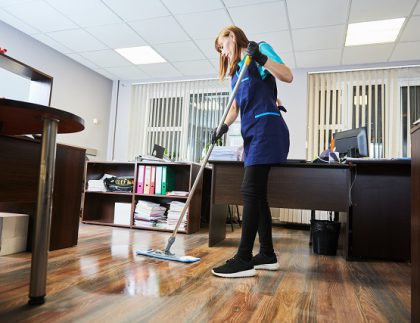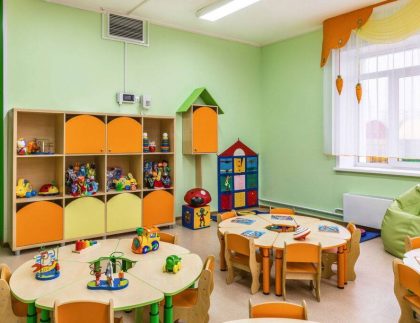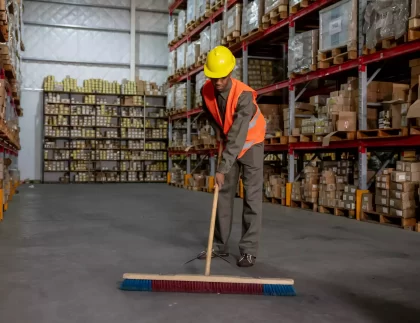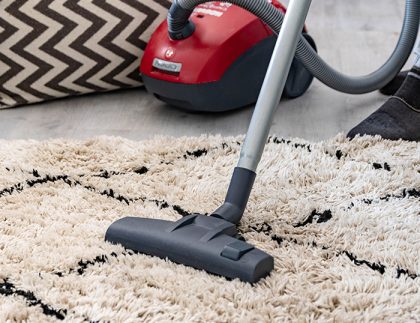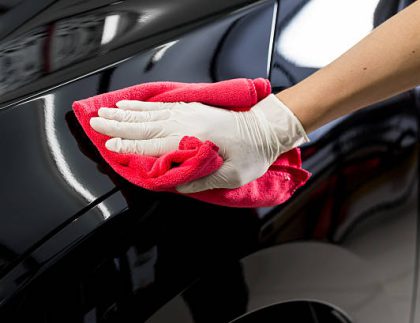
When it comes to maintaining cleanliness in a commercial setting, most businesses rely on professional cleaning services to ensure their spaces are neat, hygienic, and conducive to a productive environment. However, certain commercial spaces require more than just a surface-level cleaning. Among these, hospitals stand out as one of the most demanding environments for cleaning.
Why Is Hospital Cleaning Important?
Hospital cleaning is essential to patient care and overall healthcare facility management. It’s critical to prevent infections, maintain a safe environment for patients and staff, and ensure that hospitals operate efficiently.
How Hospital Cleaning Is Different From General Commercial Cleaning Services
Hospital cleaning is a specialized area within the commercial cleaning industry due to its challenges, from high infection risks to strict regulatory requirements. The need for specialized cleaning procedures, advanced technologies, and highly trained staff distinguishes hospital cleaning from other forms of commercial cleaning.
Let’s take a closer look at a few ways hospital cleaning differs from general commercial cleaning services:
Hospitals Have Unique Challenges
Hospitals aren’t like other commercial spaces. They are dynamic environments where the primary purpose is to provide medical care to patients, many of whom may have compromised immune systems, contagious diseases, or open wounds. This means the cleanliness of the hospital plays a critical role in preventing infections and promoting patient recovery.
Like offices or retail spaces, hospitals are also high-traffic areas. Healthcare professionals, patients, visitors, and support staff move through the space constantly, often touching surfaces and leaving behind germs or bodily fluids. Hospitals also contain specialized rooms such as operating theaters, isolation rooms, patient wards, and diagnostic areas, each with unique cleaning needs.
Hazardous materials, such as blood, bodily fluids, and medical waste, pose a unique challenge. Cleaning staff must be vigilant in properly sanitizing and disinfecting these areas to prevent cross-contamination and the spread of harmful pathogens. This creates a more complex cleaning process than in typical commercial spaces.
Infection Control is the Primary Focus
At the heart of hospital cleaning is infection control. In healthcare facilities, infections can have serious, sometimes fatal, consequences. According to the Centers for Disease Control and Prevention (CDC), healthcare-associated infections (HAIs) affect 1 in 31 hospital patients on any given day in the U.S. These infections can be caused by a range of pathogens, including bacteria, viruses, and fungi. Hospital cleaning services, therefore, are designed to eliminate these pathogens and minimize the risk of transmission.
While general commercial cleaning focuses primarily on dusting, vacuuming, and surface cleaning, hospital cleaning goes much deeper. The goal is to create a sterile environment that prevents the spread of harmful microorganisms. Hospitals achieve this by using highly effective disinfectants, sterilization techniques, and advanced cleaning protocols tailored to the healthcare environment.
In addition to standard cleaning procedures, hospital cleaning often includes the use of specialized products and technologies, such as ultraviolet (UV) light disinfection, fogging systems, and electrostatic sprayers. These methods target hard-to-reach areas, offering an additional layer of infection control.
Healthcare Facilities Have High Standards
Another major difference between hospital cleaning and other types of commercial cleaning is the level of regulation and oversight. Hospitals are held to extremely high standards when it comes to cleanliness, primarily because of the direct link between hygiene and patient safety. The cleaning process must adhere to strict guidelines to ensure that all areas are properly sanitized and safe for patients and healthcare workers alike.
The U.S. Centers for Medicare & Medicaid Services (CMS) sets cleanliness standards for hospitals and healthcare facilities through the Infection Control Program, which must be followed to receive federal funding. Additionally, hospitals must comply with the standards set by the Occupational Safety and Health Administration (OSHA), the Environmental Protection Agency (EPA), and other health and safety organizations.
Hospitals also need to comply with the Joint Commission on Accreditation of Healthcare Organizations (JCAHO), which includes specific requirements for infection control and environmental services. These standards often exceed those of other commercial cleaning services due to the increased risk associated with hospital environments.
For instance, hospital cleaning staff must be trained in biohazard waste disposal, the proper handling of medical equipment, and the correct use of disinfectants that meet healthcare-specific standards. The cleaning procedures are subject to rigorous documentation, and audits are often conducted to ensure compliance with infection control standards.
Discover how often medical office cleaning should be performed to maintain health and safety—and how professional cleaning services can help.
Hospitals Require Specialized Cleaning Equipment and Products
Hospitals use specialized equipment and cleaning products that go beyond what’s typically used in office buildings or retail stores. These products are designed to disinfect and sanitize, ensuring that surfaces are free from dangerous pathogens and contaminants.
- Disinfectants and Sterilizers: Hospital-grade disinfectants are often more powerful than general-purpose cleaners used in other commercial spaces. They are specifically formulated to kill harmful bacteria, viruses, and fungi that may pose a risk to patients, such as MRSA, C. difficile, or influenza. Disinfectants used in hospitals must meet the EPA’s criteria for use in healthcare environments, which means they must be both effective and safe for human use.
- UV Light and Electrostatic Sprayers: In hospitals, UV-C light disinfection and electrostatic sprayers are often employed to disinfect rooms, equipment, and surfaces. UV light can penetrate bacteria and viruses, rendering them harmless, and electrostatic sprayers create an even coating of disinfectant that can cover large areas and difficult-to-reach surfaces, such as the undersides of tables, chairs, and medical equipment.
- Autoclaves: In hospitals, autoclaving is commonly used to sterilize medical tools and instruments. This high-temperature, high-pressure steam sterilization ensures that surgical tools are free of pathogens before they are used in patient care.
- HEPA Filters and Vacuum Systems: To reduce airborne contaminants, hospitals often use vacuum cleaners equipped with high-efficiency particulate air (HEPA) filters. These filters trap tiny particles, including dust, allergens, and microorganisms, preventing them from being released back into the air.
- Color-Coded Cleaning Equipment: In healthcare settings, cleaning tools, such as mops and cloths, are often color-coded to prevent cross-contamination between different areas of the hospital. For example, a red mop might be used in a patient restroom, while a blue mop is used in a public hallway.
Trained and Specialized Cleaning Staff Are Essential
The skill set required for hospital cleaning goes beyond the basic training needed for general commercial cleaning. Hospital cleaning staff must undergo specialized training that focuses on infection control, the safe handling of hazardous materials, and the proper use of cleaning chemicals. They are also trained in identifying potential health risks, such as areas of standing water that could harbor bacteria or viruses.
Hospital cleaning staff often work in close collaboration with healthcare professionals to ensure that cleaning protocols are followed and that no part of the facility is overlooked. For example, the cleaning of patient rooms, operating theaters, and emergency rooms is carried out in accordance with specific protocols to prevent contamination between patients, staff, and the environment.
Because many hospital patients are vulnerable and immunocompromised, hospital cleaning staff must be trained to ensure that all surfaces are sanitized properly and that no pathogens are spread during the cleaning process. Personal protective equipment (PPE), such as gloves, masks, and gowns, is also a crucial component of hospital cleaning to protect both the staff and patients.
Many Areas Require Specialized Cleaning
- Operating Rooms: Operating rooms (ORs) are some of the most sterilized and carefully cleaned areas in any hospital. Surfaces are disinfected between surgeries, and specialized equipment is used to maintain a sterile field during procedures. Cleaning ORs often requires a combination of mechanical and manual cleaning methods to ensure all equipment and surfaces are completely free from pathogens.
- Isolation Rooms: Isolation rooms are used for patients with contagious diseases. These rooms must be cleaned with extra care to prevent cross-contamination. Special disinfectants are often required, and cleaning staff must wear protective gear to ensure that they don’t carry pathogens out of the room.
- Patient Rooms: Each patient room requires thorough cleaning and disinfecting to ensure that no harmful pathogens are left behind. Hospital cleaners focus on high-touch areas such as bed rails, call buttons, and door handles. All linens are changed, and medical waste is disposed of according to strict guidelines.
- Restrooms and Public Areas: Restrooms in hospitals must be cleaned frequently throughout the day to prevent the spread of germs. Public areas, such as lobbies and waiting rooms, also need to be sanitized regularly to maintain a safe environment for patients and visitors.


